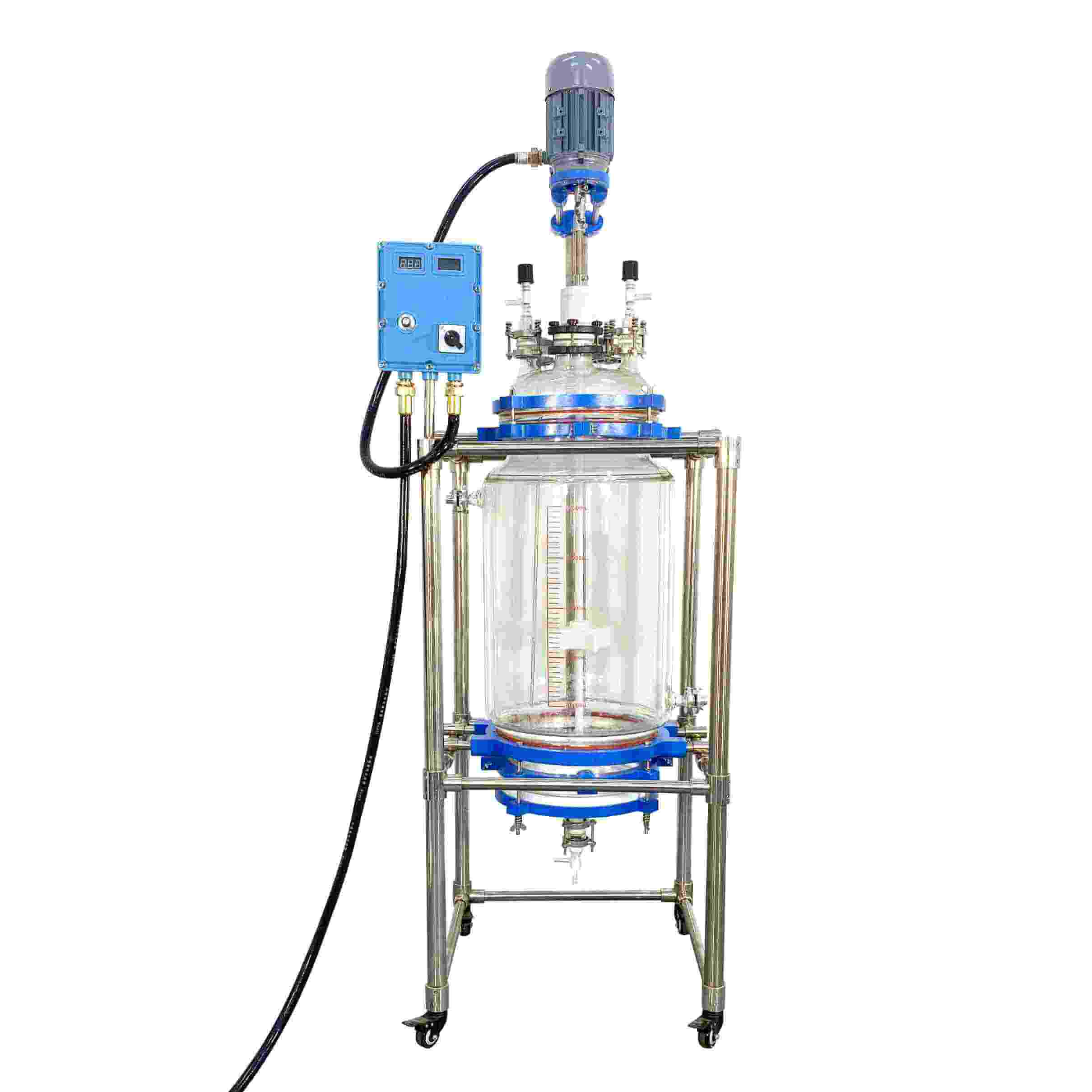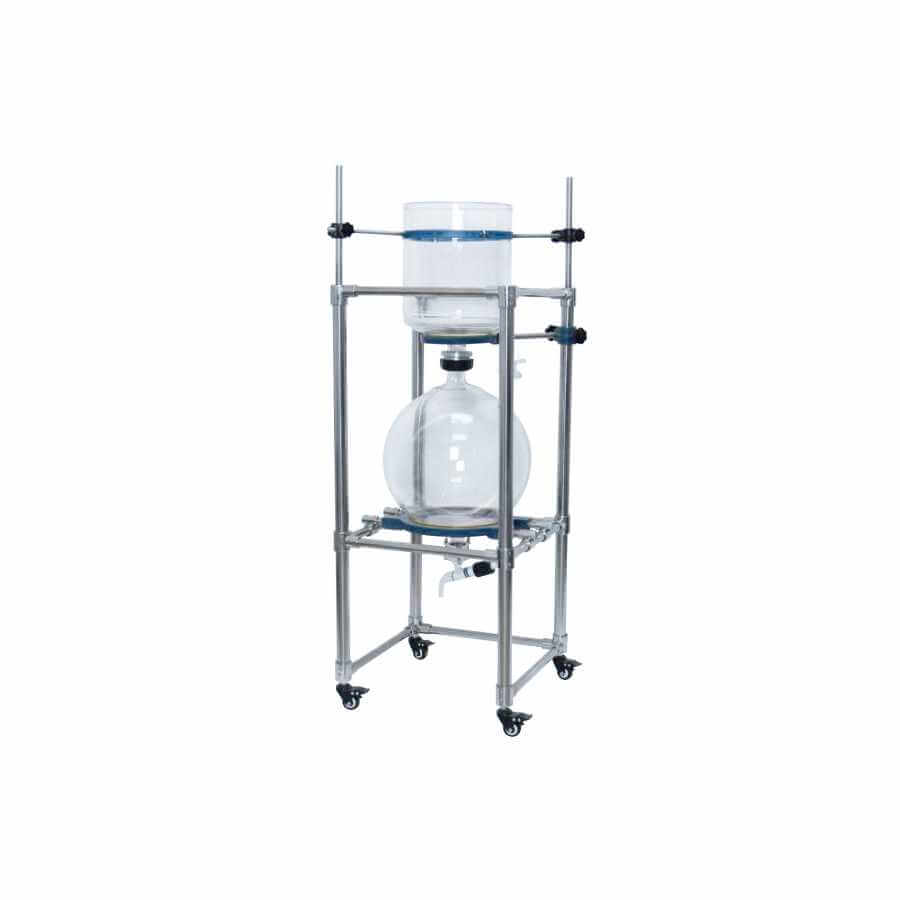


Glass Reactor
Glass reactors: used in chemical reactions, drug research and development, fine chemicals, food manufacturing, and other fields.
Material
glass
Capacity (L)
10-10000+
Mixing system
anchor, paddle, frame and others
Heating system
electric heating, oil heating and others
RUNGYU glass reactors are commonly used biochemical instruments and are widely used in modern fine chemicals, biopharmaceuticals, scientific research and experiments, and other industries. They can be used for concentration, distillation, reflux, separation, and purification reactions under the conditions of constant speed, constant force, and constant temperature. It is an ideal equipment for teaching, experiment, pilot test, and production.
Request a quoteWith the progress and development of biopharmaceutical and chemical industries, glass reactors have been further improved along with the reaction of materials. Currently, RUNGYU chemical reactor manufacturers have produced various types of machines to address this problem, such as glass reactors of different levels and pressures.

The glass reactor mainly uses a constant-temperature oil bath or a low-temperature circulation pump, and then the reactants are heated and cooled cyclically through the interlayer of the glass reactor. This allows the temperature of the reactants in the glass reactor to be optimally controlled so that it can be used in experiments. The efficiency and quality of products have been significantly improved.
The glass reactors are all made of high borosilicate materials. The glass pieces are heated below the transition temperature and kept warm to eliminate the temperature gradient in each part of the glass reactor. The stress of glass accessories is relaxed, eliminating the stress in the glass parts. The appearance of the glass parts will be smoother and more beautiful, and the service life will be significantly improved. It can withstand high temperatures of 300°C and low temperatures of -80°C without breaking.
Under the set constant temperature, in the sealed glass reactor, the glass reactor can perform a stirring reaction under normal pressure or negative pressure according to the requirements of use and can perform reflux and distillation of the reaction solution. It is a modern fine chemical, biopharmaceutical Ideal pilot and production equipment for synthesizing new materials.

The dual-window digital display shows the speed and temperature measurement values, with high-temperature measurement accuracy and small errors, which effectively improves work efficiency. The overall stainless steel column mobile frame structure, has five reaction kettle covers, with a full set of glass for reflux, liquid addition, temperature measurement, etc. The production must be processed, tested, and tested in strict accordance with the corresponding standards. According to different production processes and operating conditions, the design structure and parameters of glass reactors are different, that is, the structures and styles of glass reactors are different, and they are non-standard container equipment.
Due to the small thickness of the interlayer in the middle of the glass reactor, the thermal insulation performance is poor. In the process of using high temperature and low temperature, users need to use thermal insulation materials to maintain the thermal insulation of the kettle body.
At the same time, users need to wrap the glass reactor body and liquid conduit with insulation materials and pay attention to the thickness of the insulation layer to ensure a good insulation effect.
Selection of temperature control medium, generally speaking, users will select a temperature control medium of different properties according to the required reaction temperature as the heat transmission medium of the reaction. Choose an ice ethanol bath for low temperature, a water bath for normal temperature, and an oil bath for high temperature.
The industry recommends that when using a low temperature or high temperature, pay attention to choosing the appropriate medium, the key is viscosity. If the viscosity of the medium is too large, the circulating pump may not be able to carry it, the medium circulation effect is not good, and the required temperature control effect cannot be achieved. If a high-power circulating pump is replaced rashly, the pressure of the incoming medium is too high, which can easily damage the lining of the glass reactor and cause it to explode.
Usually, glass reactor manufacturers will choose the corresponding heating medium according to the reactants.
The storage location needs to be reasonable. The glass reactor is installed as a reaction amplification experiment. The volume is usually 50-150L. The volume can be customized for specific situations. Therefore, the scope of the experiment should not be underestimated. Since the kettle body is made of glass, stainless steel is the bracket and the legs are casters, the storage location needs to be carefully selected. As far as storage conditions are concerned, although the casters can be fixed with foot buckles, the stability is not strong. Therefore, users should pay attention to choosing a flat center during storage and insist that the mechanical stirring center is different from that of the glass reactor, otherwise, it is easy to swing unstable and cause accidents. Also, please place it in a well-ventilated place.
Note on feeding, because the glass reactor is an independent reaction rack and the reserved feeding port is small, the feeding process is relatively difficult.




